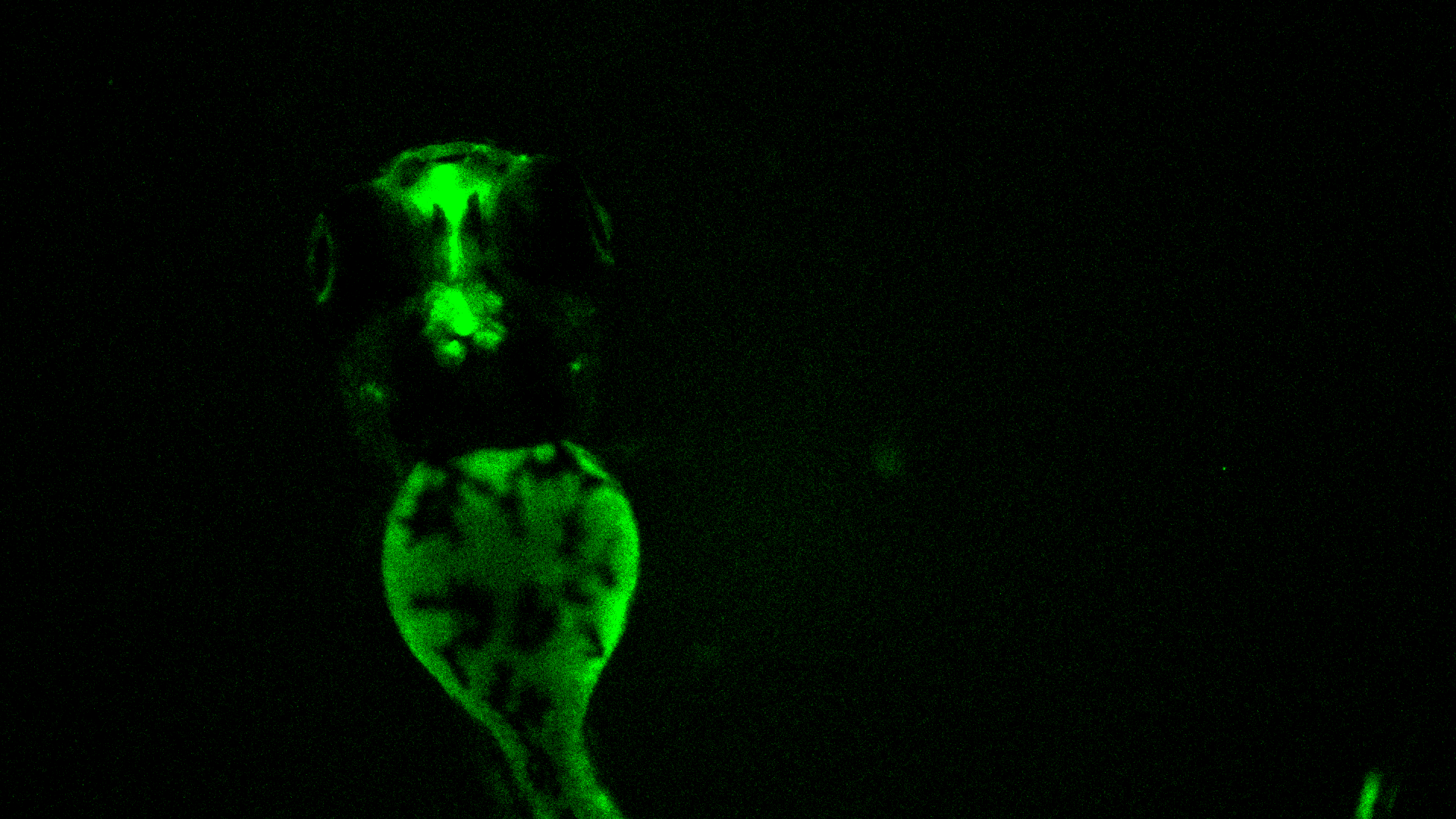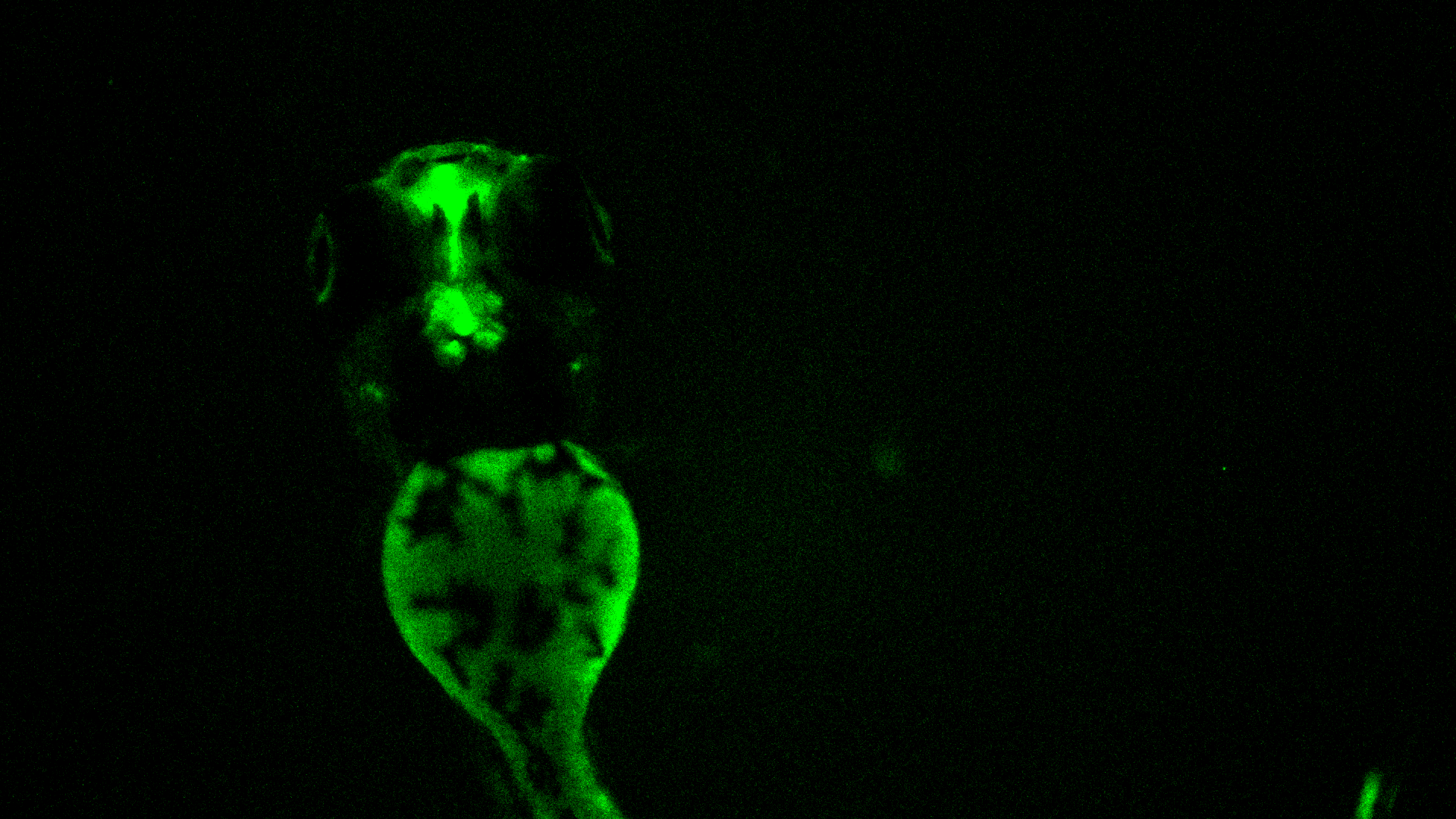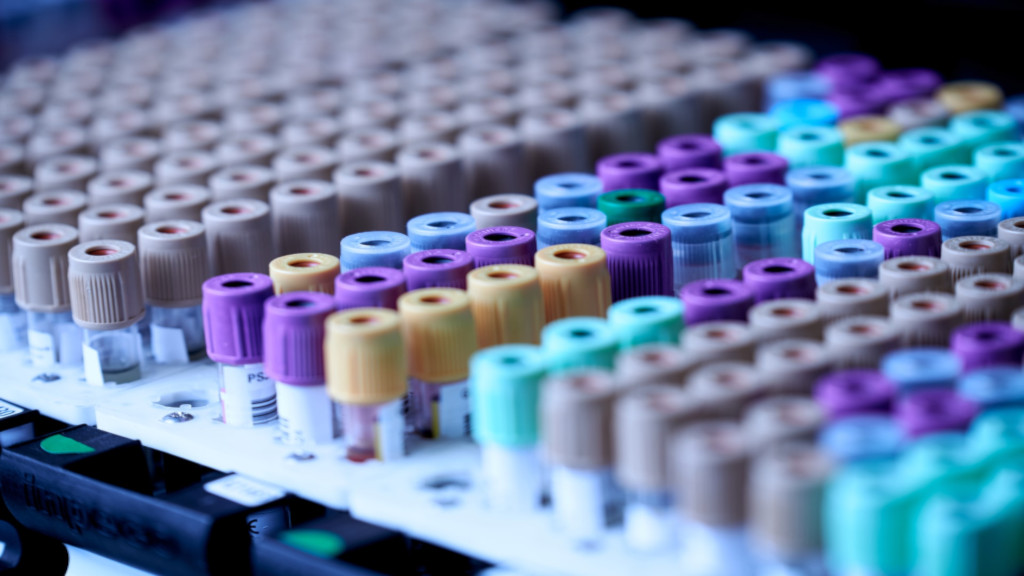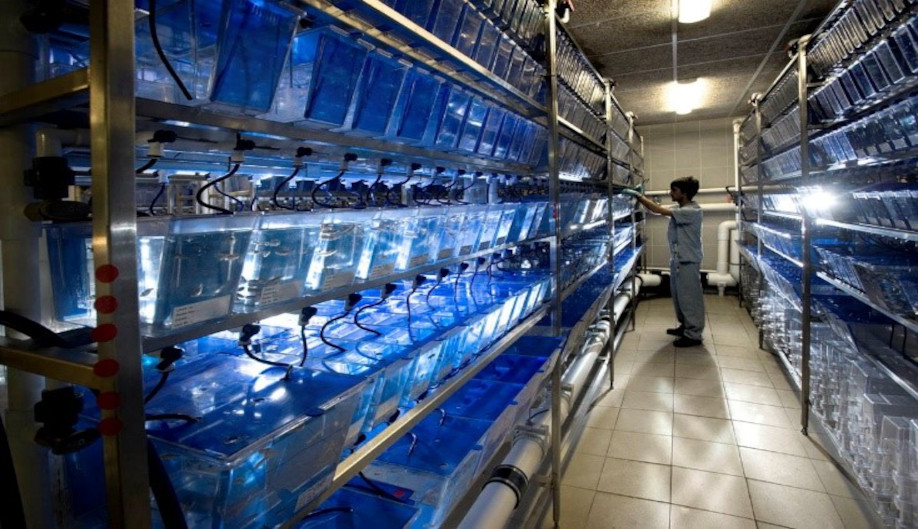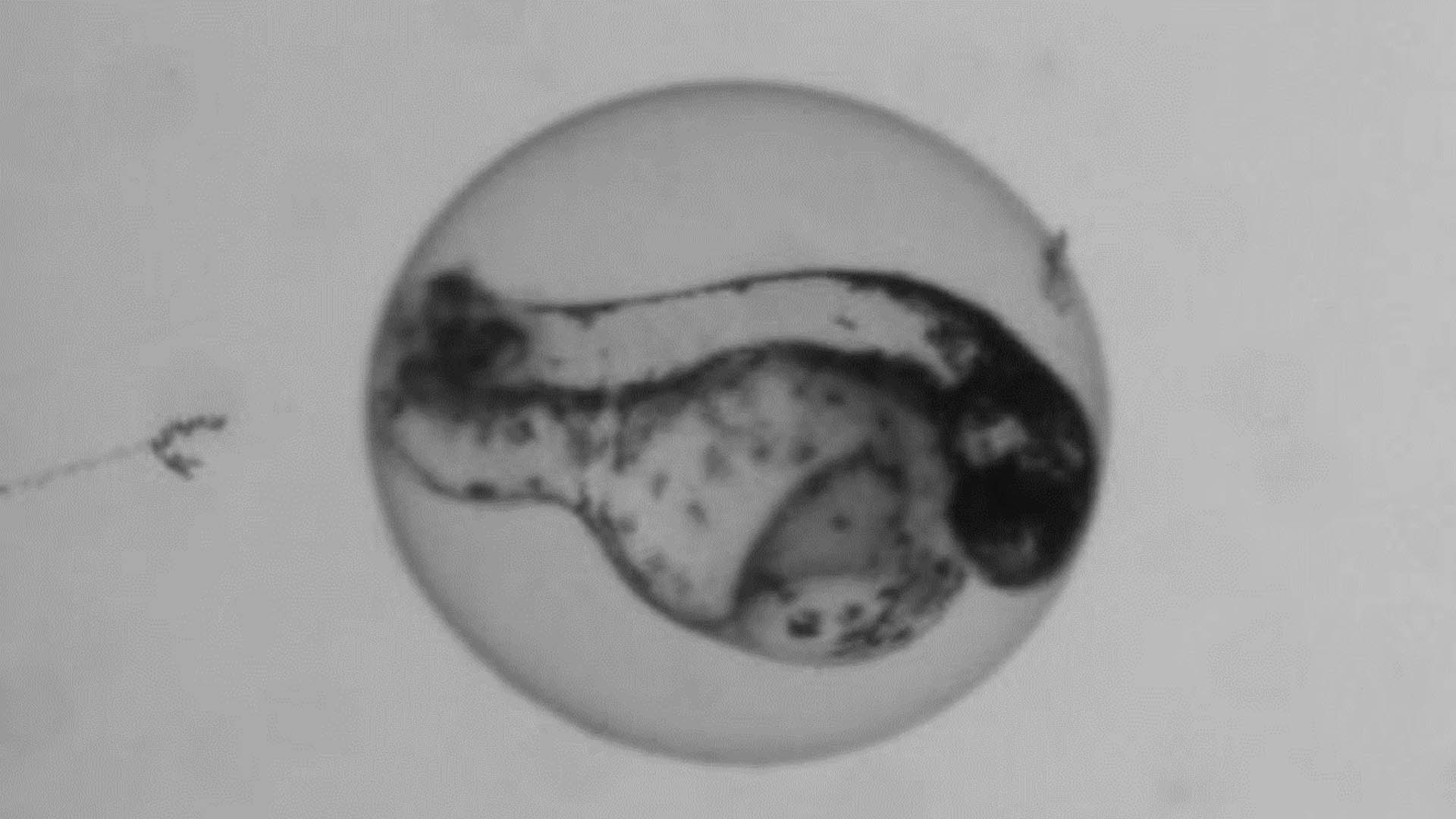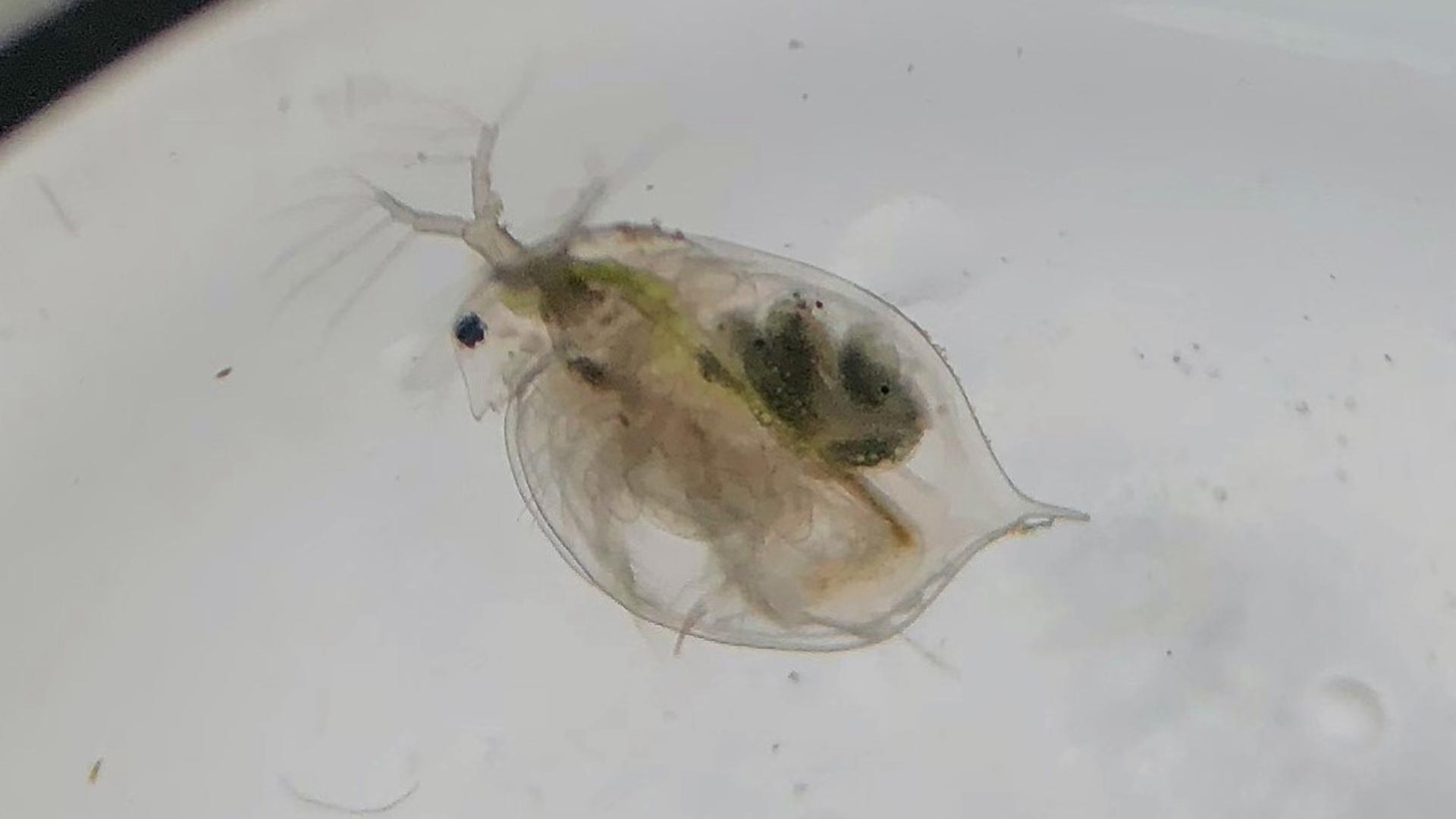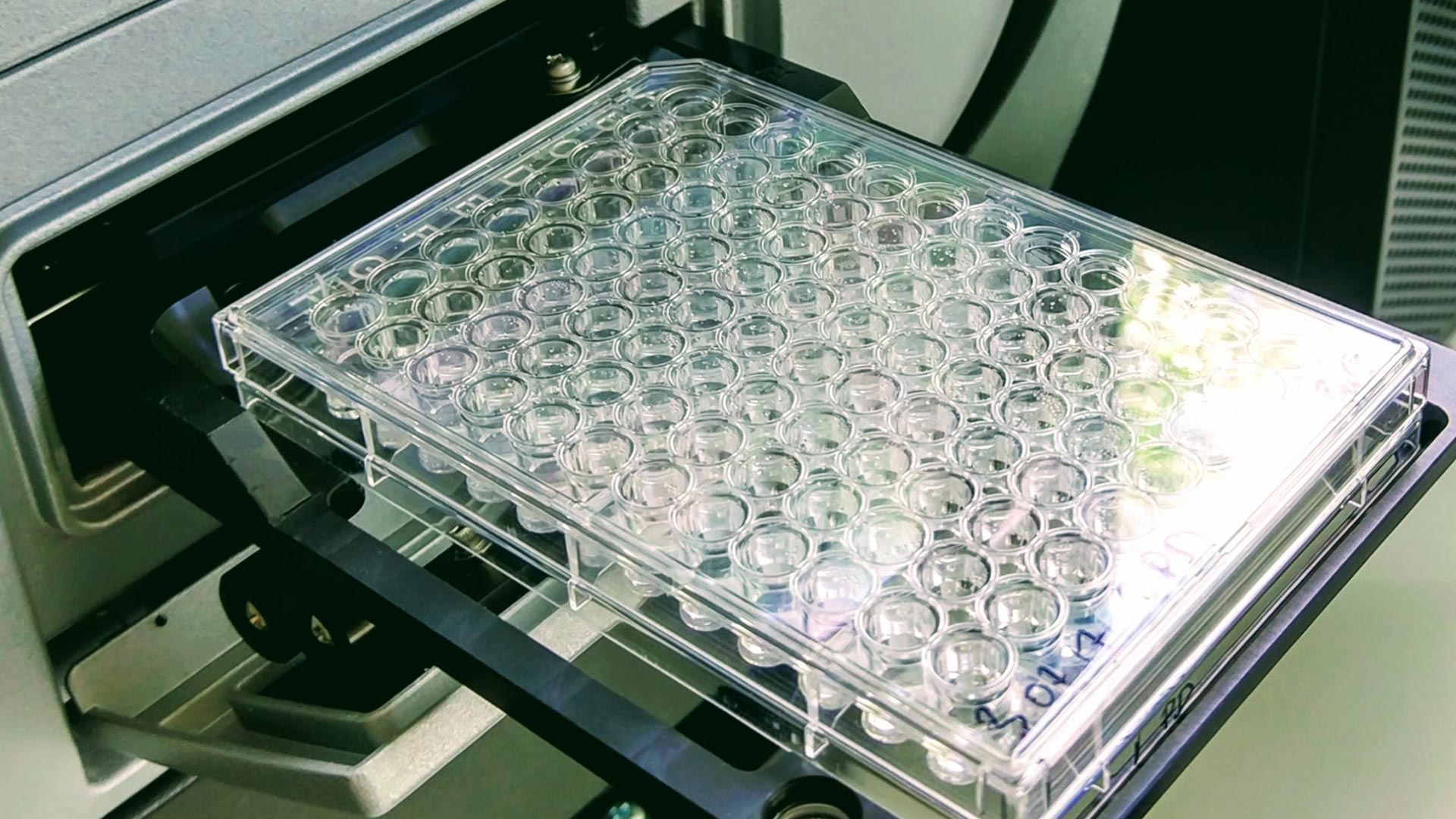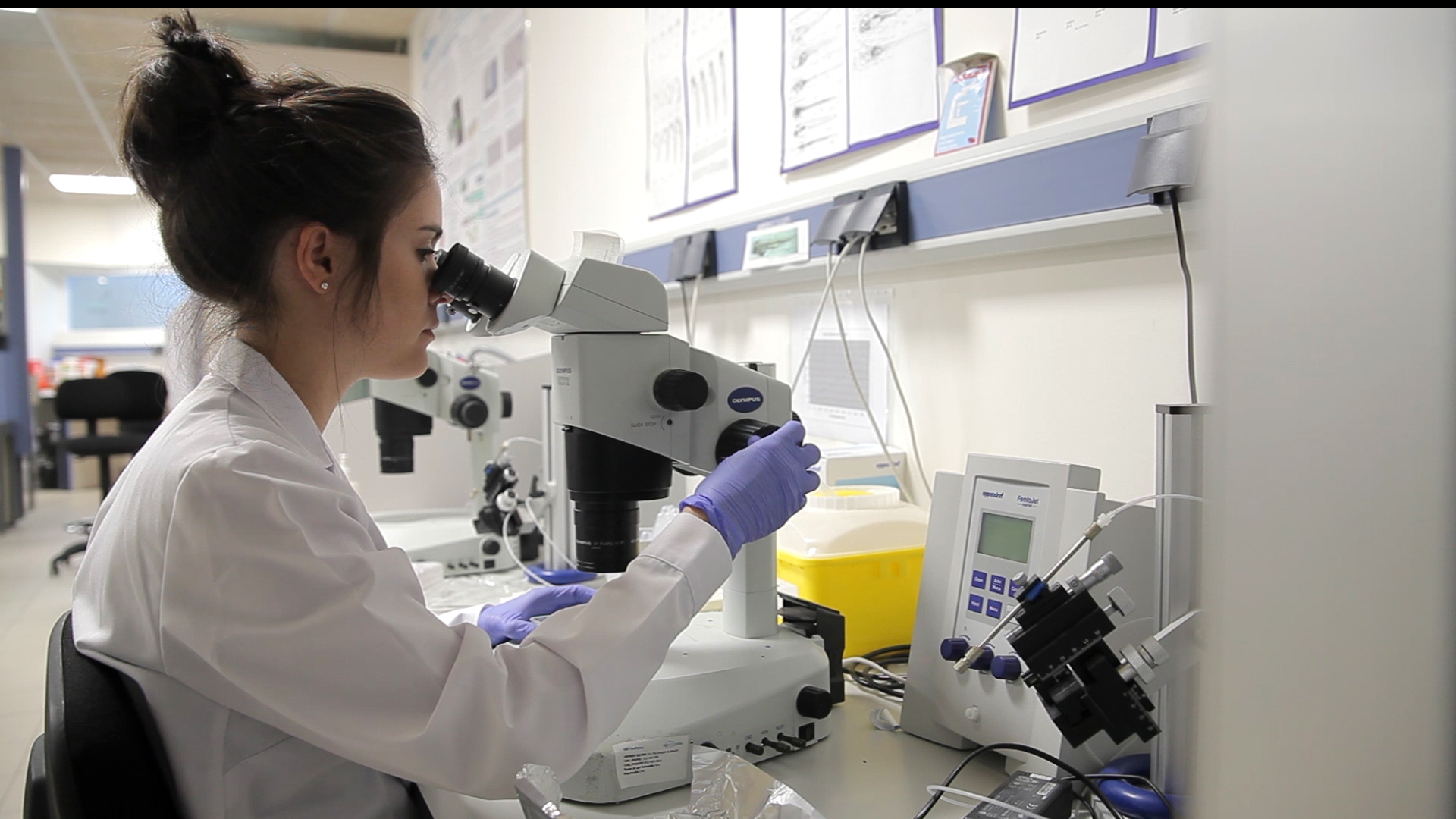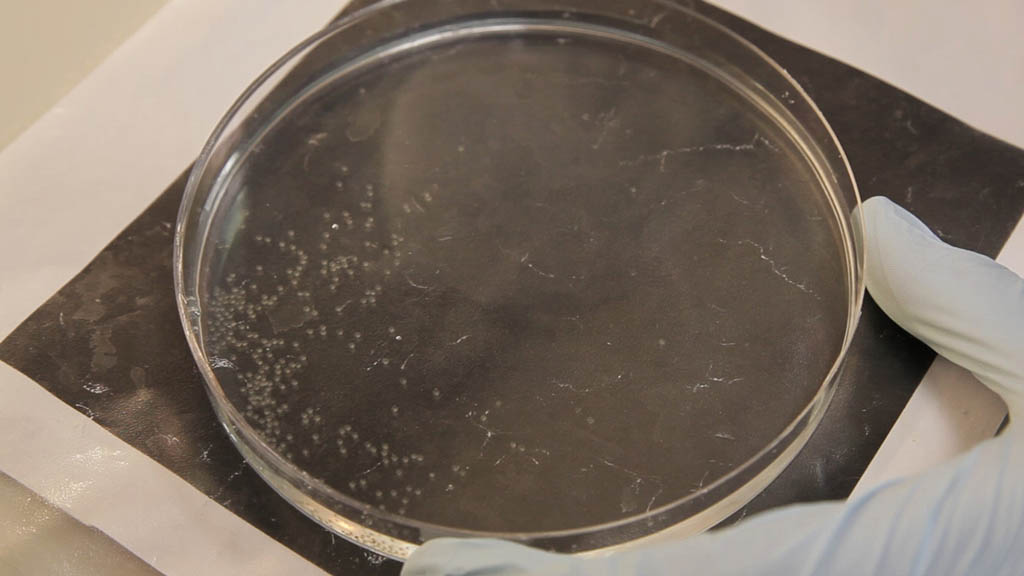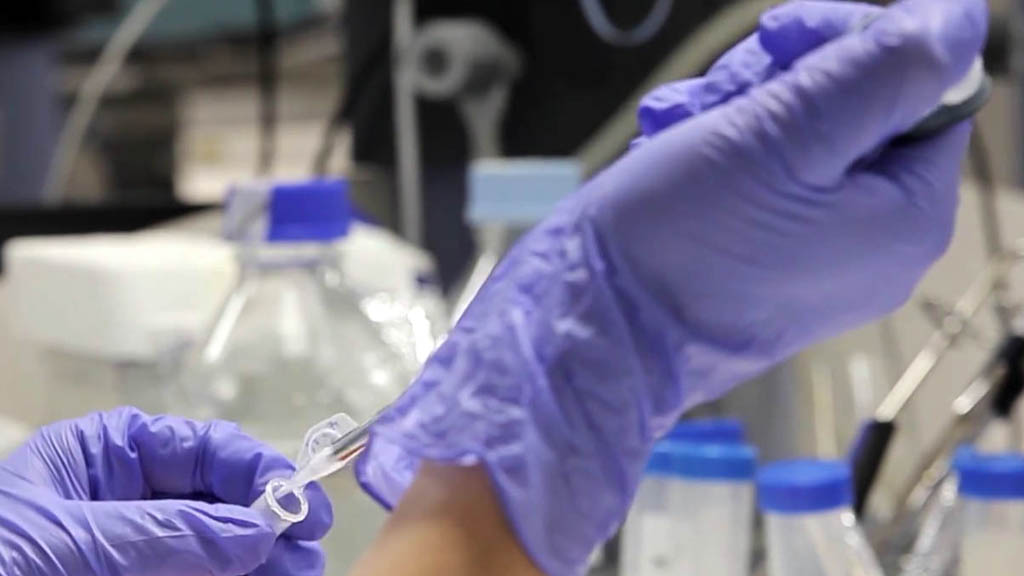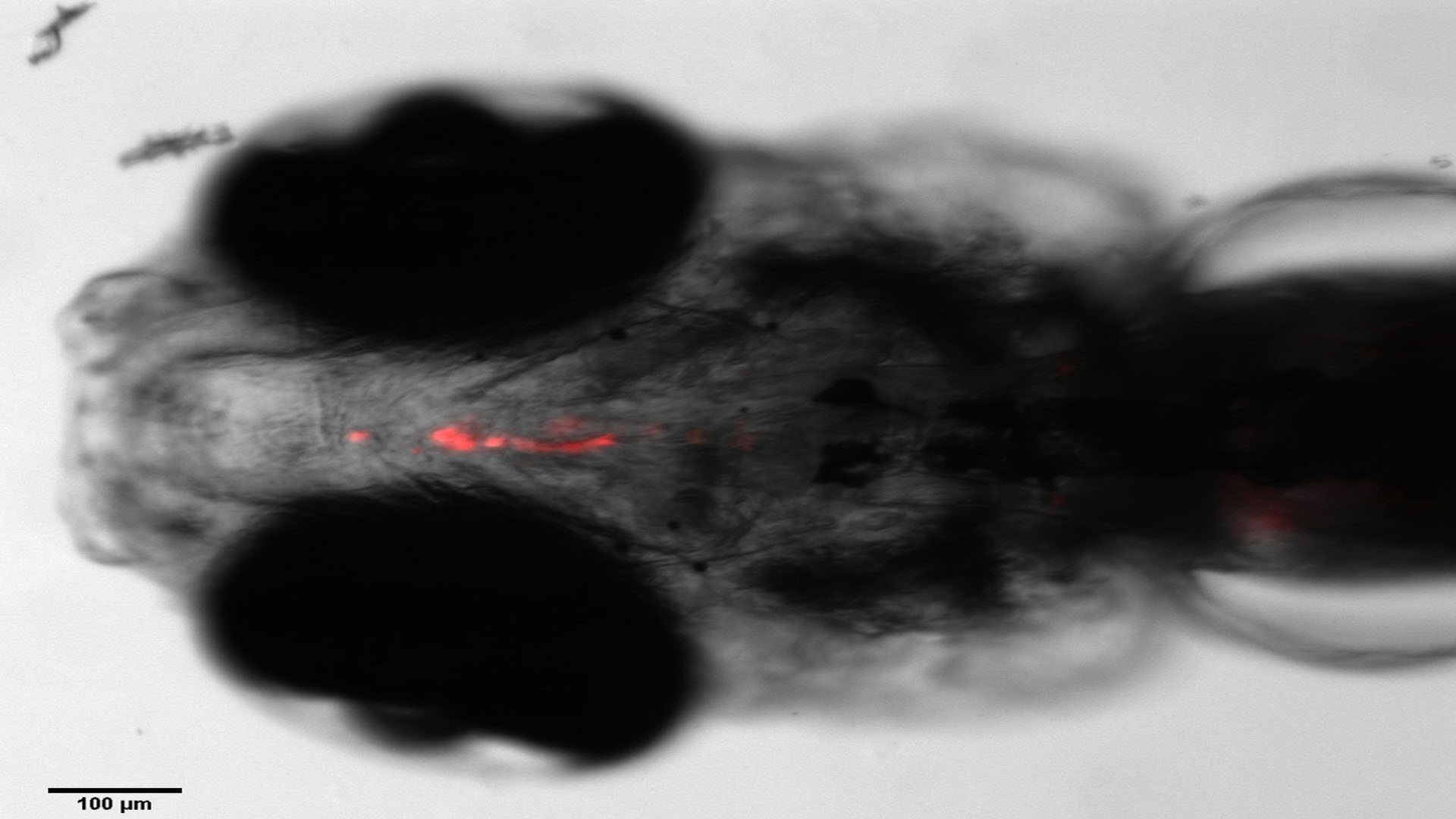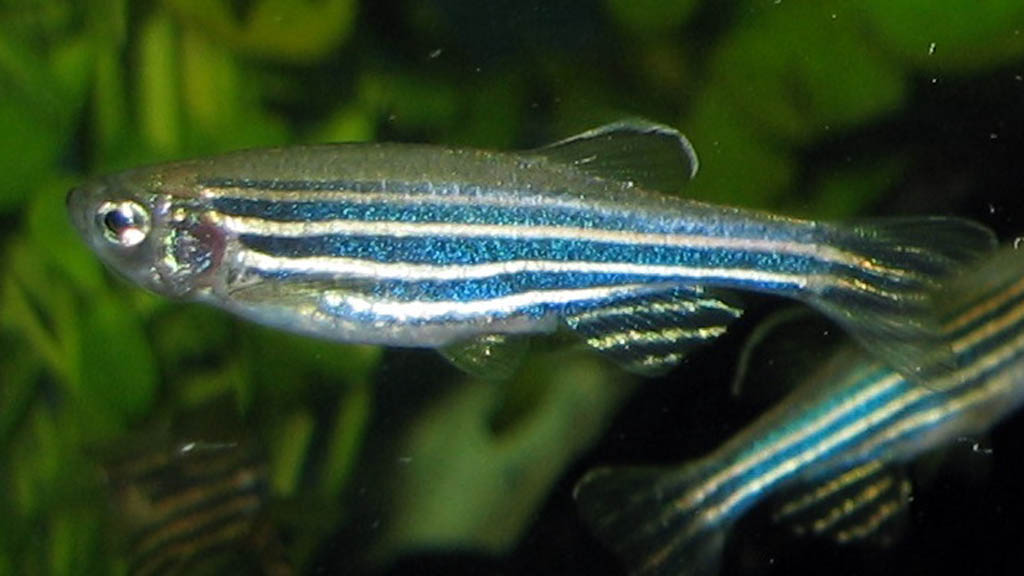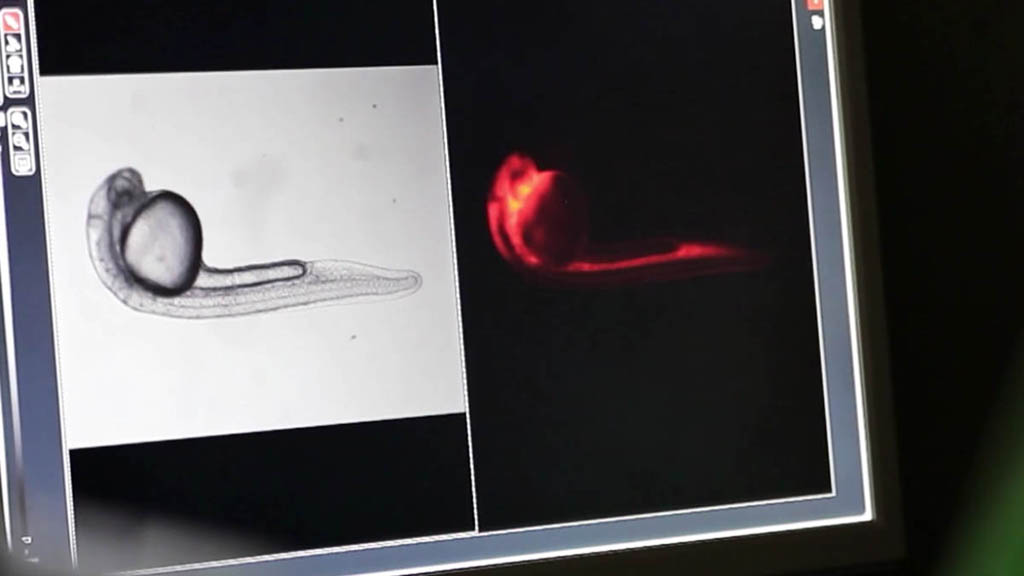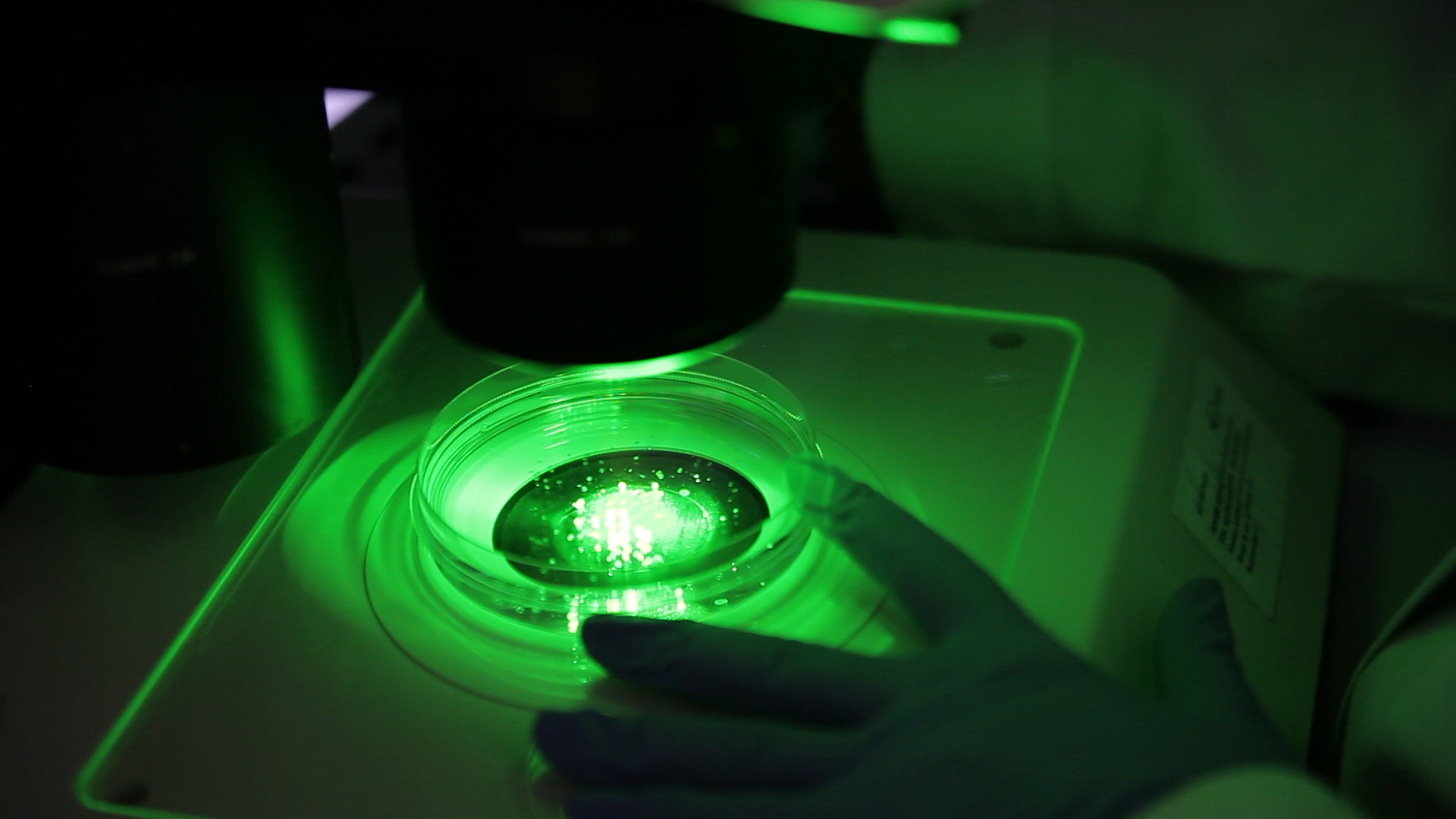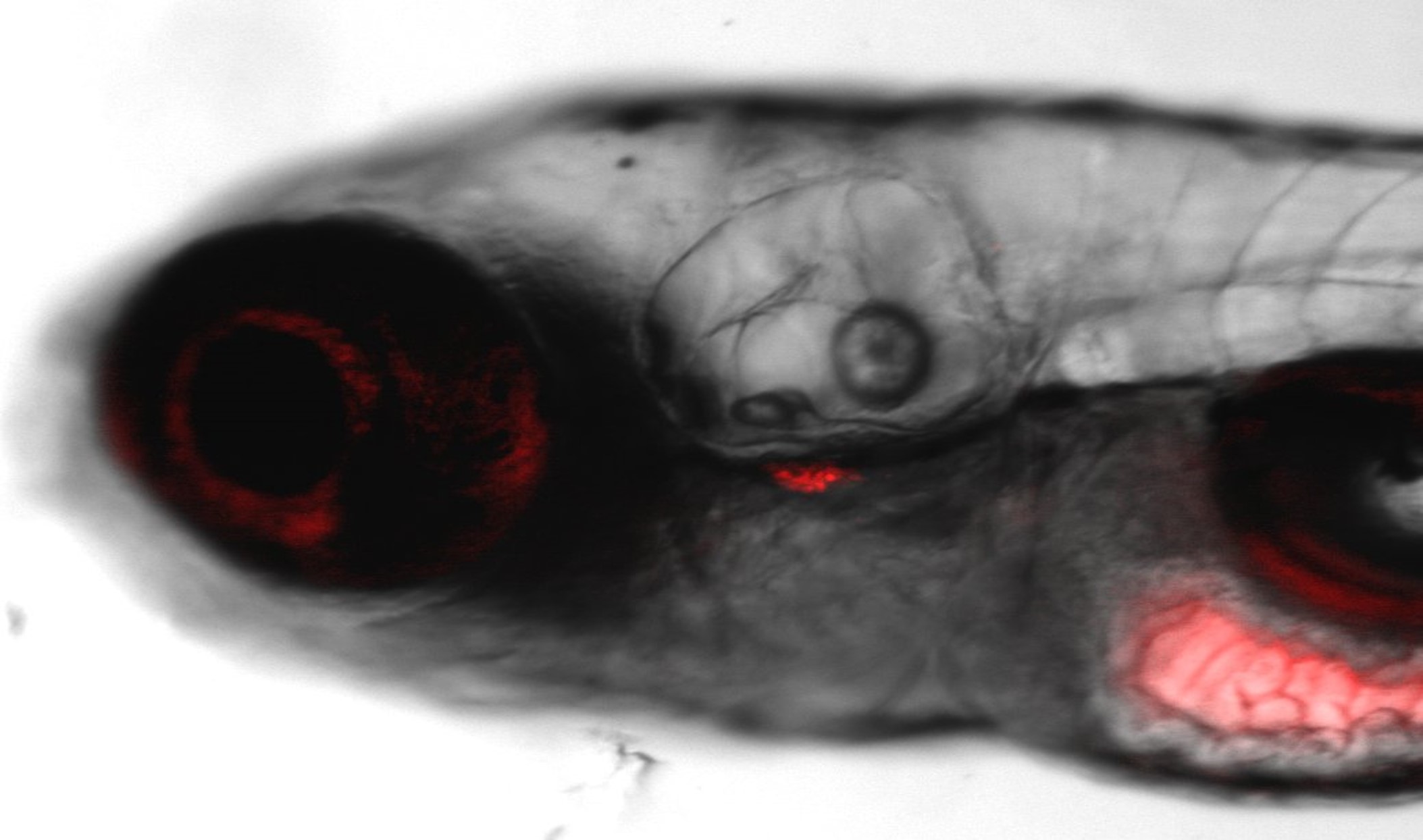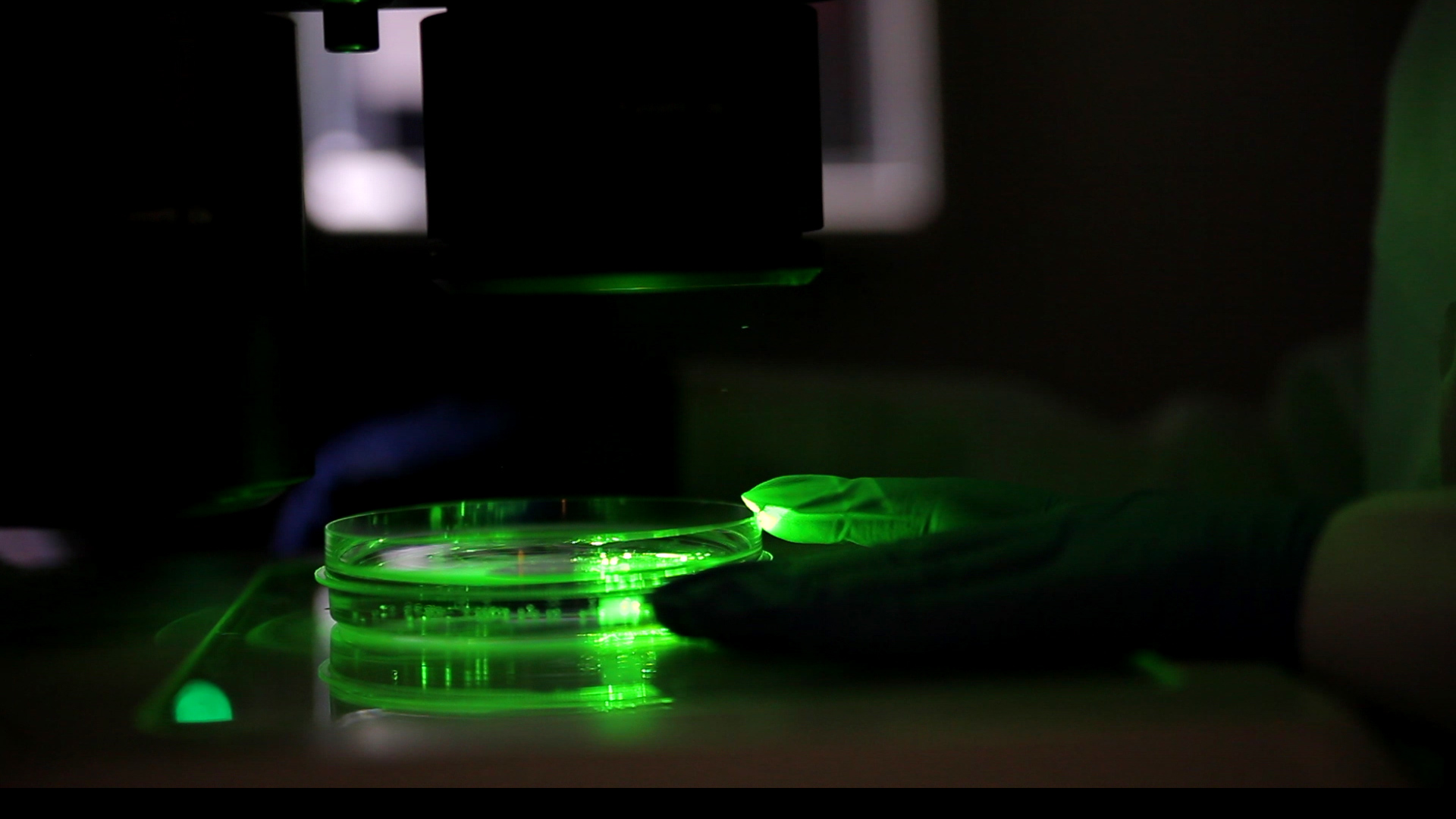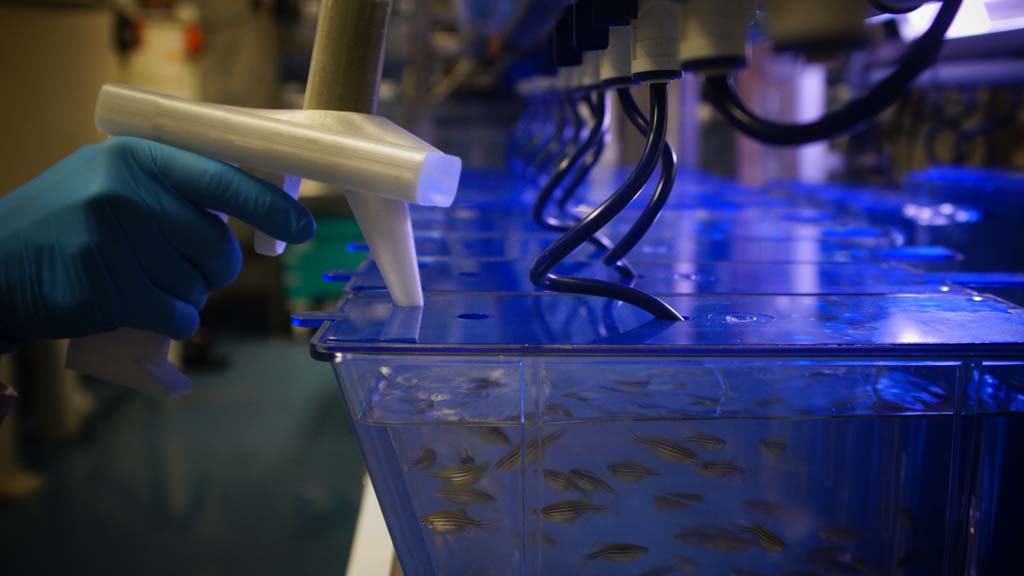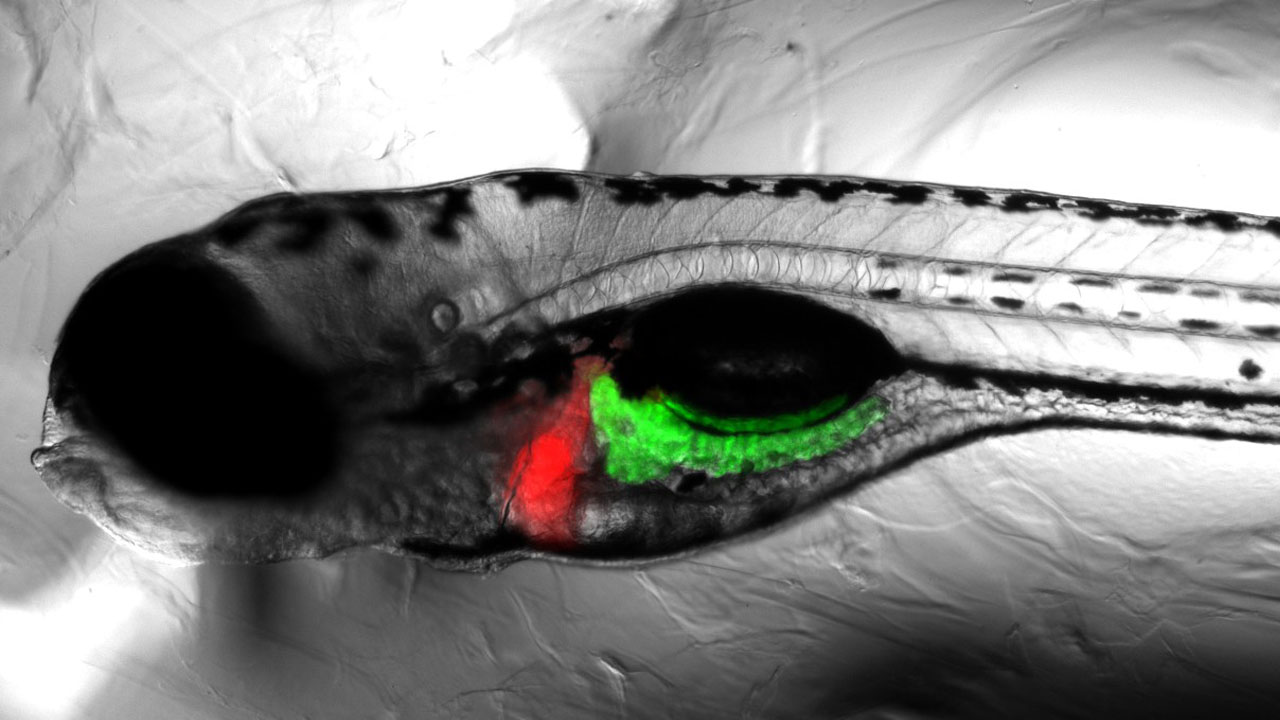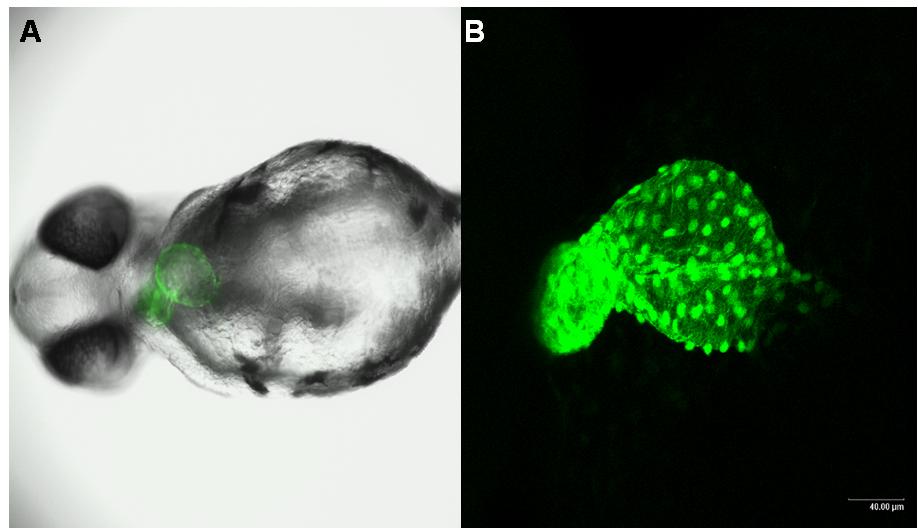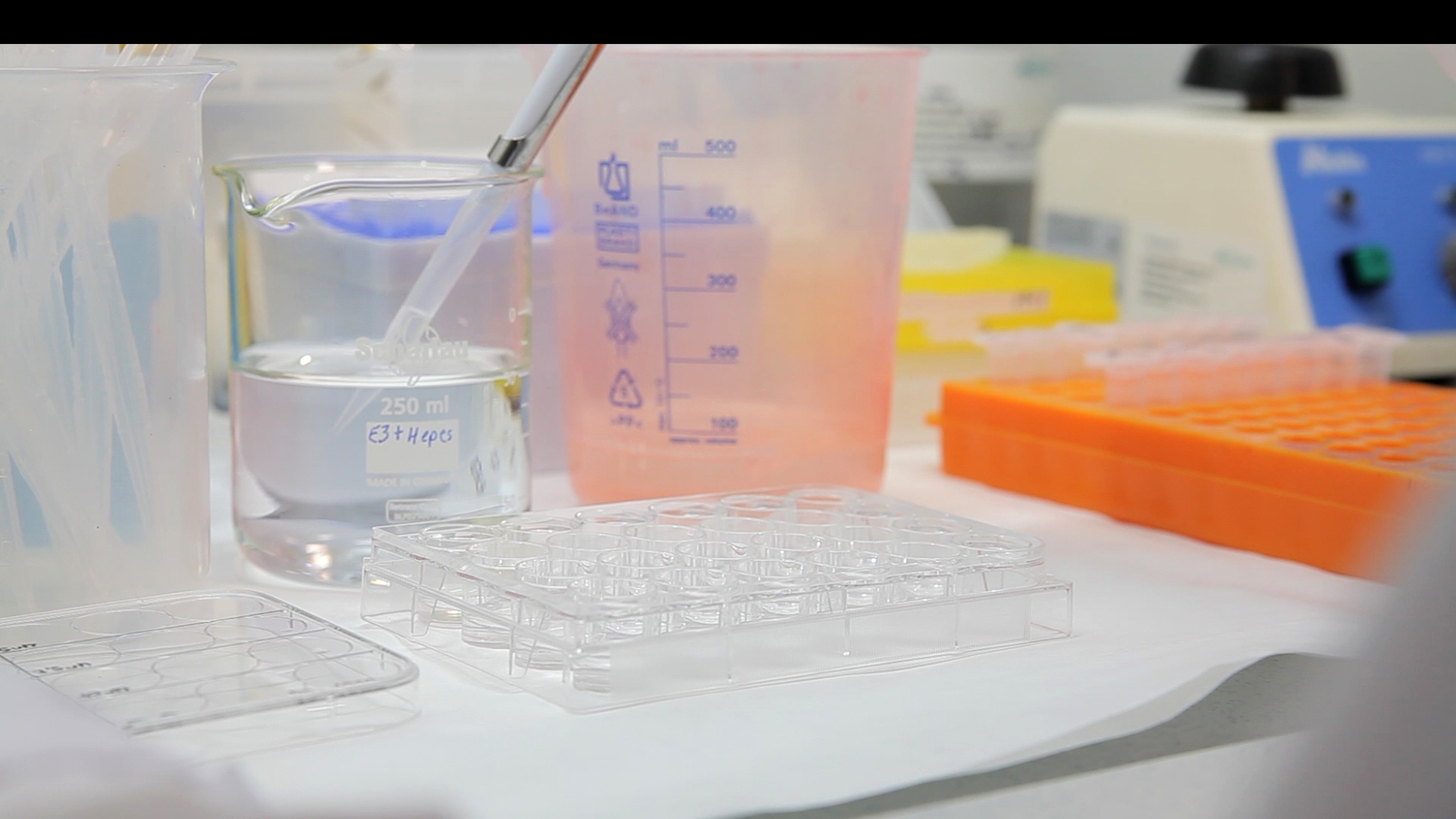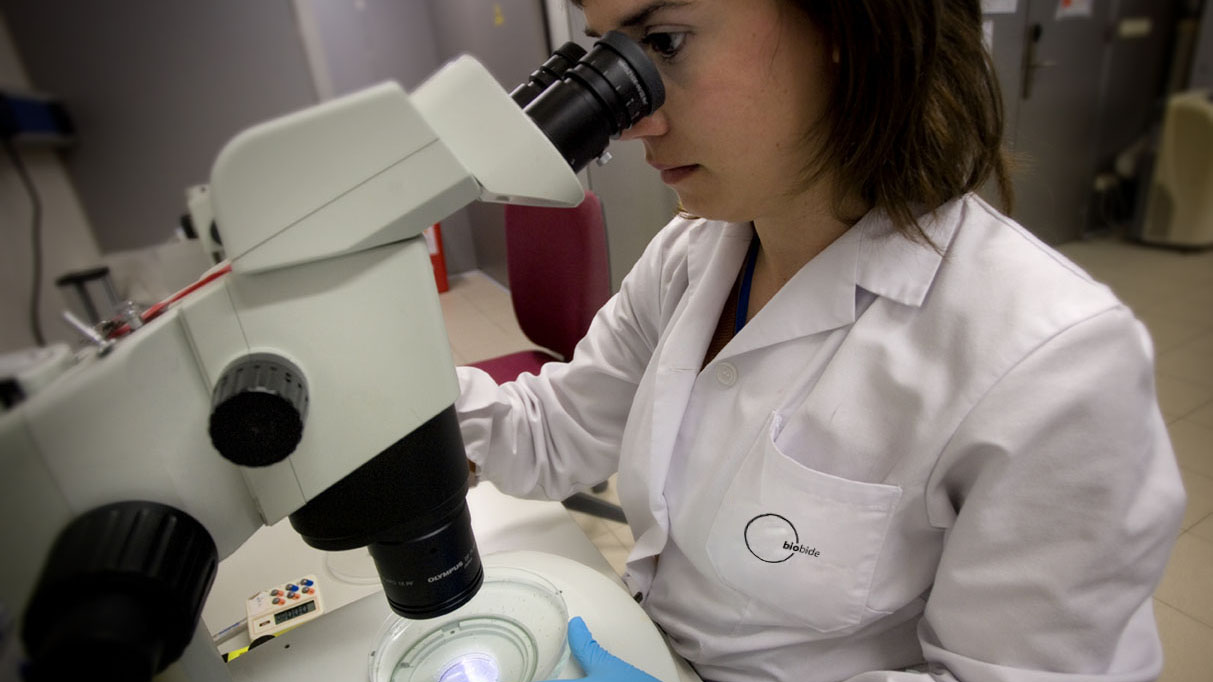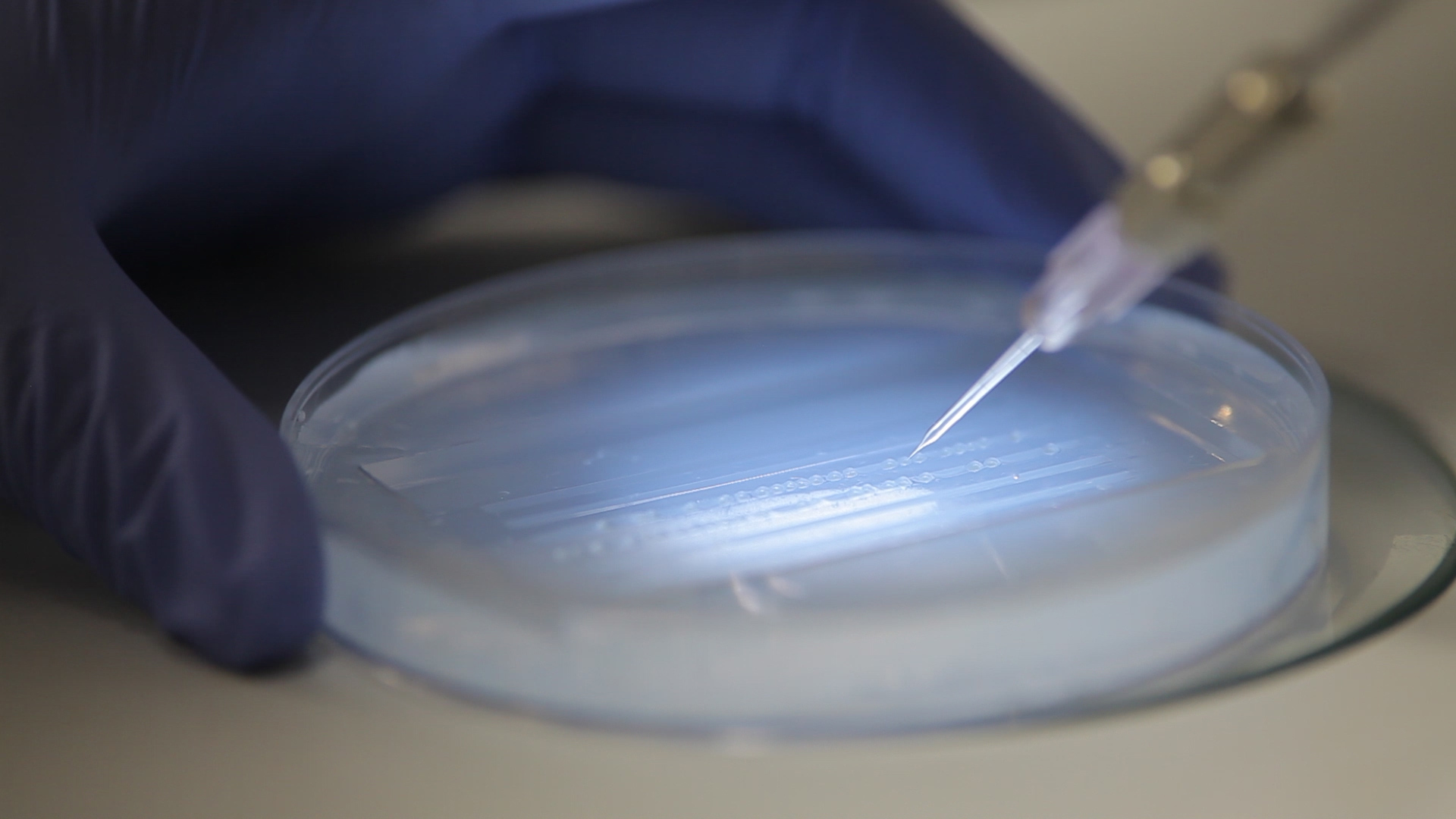EASZY Assay: Estrogen Pathway
Endocrine-disrupting chemicals (EDCs) are widespread in the environment and have been shown to cause a range of harmful effects on reproductive and developmental processes, neurological functions, or the immune system in both human populations and wildlife.
Biobide has validated the OECD TG Nº250 assay using transgenic zebrafish embryos from Tg(cyp19a1b:GFP) with fluorescence in the estrogen receptors. This assay shows high sensitivity, allowing the detection of substances that activate or inactivate estrogen receptors (ER), directly or indirectly, even at low concentrations.
The EASZY Assay is composed of two phases :
1. MAXIMUM TOLERATED CONCENTRATION test is performed to characterize the systemic and developmental toxicity profile. EC10, is calculated for each test substance
2. ESTROGEN RECEPTOR SIGNALING PATHWAY FLUORESCENCE TEST is carried out using the Tg(cyp19a1b:GFP) transgenic zebrafish embryos, expressing green fluorescence protein (GFP) by Estrogen Receptors through the brain aromatase gene promoter (Tong et al., 2009). This model allows for the detection of direct or indirect ER agonists and antagonists. The fluorescence signal is assessed by image analysis and compared to the control mean. A dose-response curve is performed, and potency and hazard indicators are determined with EC50 and statistical differences between groups.
Services
-
EASZY Assay: Estrogen Pathway
Ecotox-Assays / Specific-Toxicity-Assays / -
Zebrafish Sperm Cryopreservation and In Vitro Fertilization
Specific-Toxicity-Assays / -
Zebrafish Models for Amyotrophic Lateral Sclerosis
Specific-Toxicity-Assays / -
Kidney Toxicity
Specific-Toxicity-Assays / -
Sperm quality assessment
Specific-Toxicity-Assays / -
Muscle toxicity
Specific-Toxicity-Assays / -
Acutetox Assay - Ecotox
Ecotox-Assays / -
Daphnia Immobilization
Ecotox-Assays / -
Microplate Alga Growth Inhibition Test
Ecotox-Assays / -
Antioxidation Assay
Efficacy-Assays / -
Regeneration Assay
Efficacy-Assays / -
Melanin Quantification Assay
Efficacy-Assays / -
Thyroid Disruption Assay
Ecotox-Assays / -
Neurodegenerative and Rare Diseases
Efficacy-Assays / Disease-Model-Generation / -
Cancer: Angiogenesis Inhibition Assay
Efficacy-Assays / -
Multitox Assay
Specific-Toxicity-Assays / -
Immunotox Assay
Specific-Toxicity-Assays / -
Ototox Assay
Specific-Toxicity-Assays / -
Neurotox Assay
Specific-Toxicity-Assays / -
Hepatotox Assay
Specific-Toxicity-Assays / -
Cardiotox Assay
Specific-Toxicity-Assays / -
Teratotox Assay
General-Toxicity-Assays / -
Acutetox Assay
General-Toxicity-Assays / -
Disease Model Generation
Disease-Model-Generation / -
Target validation
Target-Validation /


